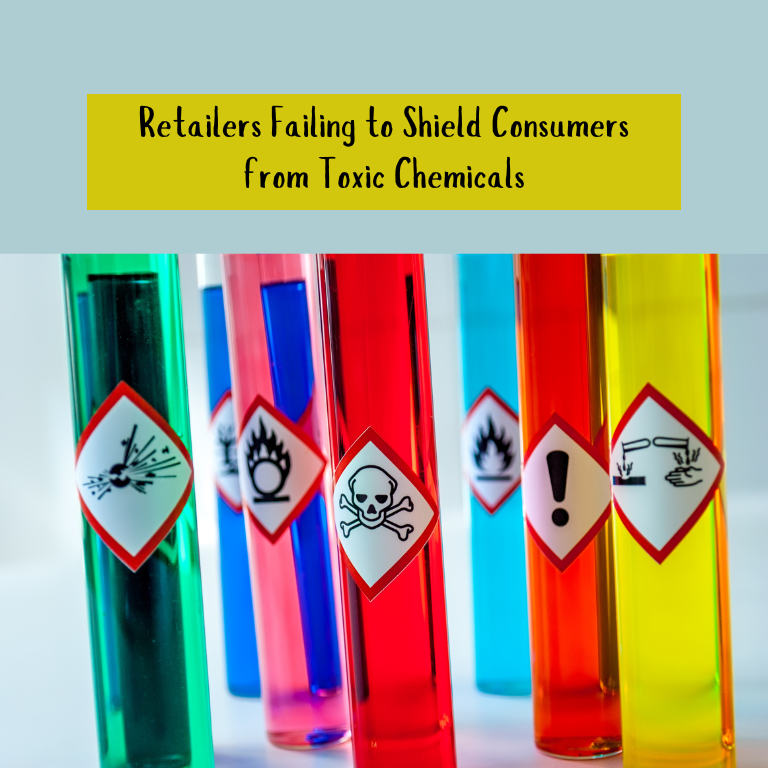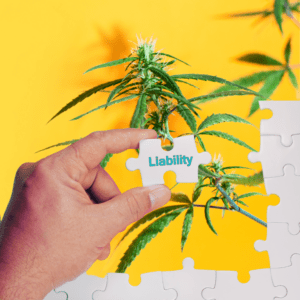Toxic Chemicals: Retailers Neglect Consumer Safety

Retailers Failing to Shield Consumers from Toxic Chemicals in the Cannabis Industry
The cannabis industry has experienced tremendous growth over the past decade, evolving from a marginalized market to a multi-billion-dollar global enterprise. However, with this rapid expansion comes significant challenges, particularly in consumer safety. A concerning issue that has surfaced is the failure of some cannabis retailers to protect consumers from toxic chemicals present in various cannabis products.
This article delves into the reasons behind this shortcoming, its implications for public health, and the steps the industry must take to address this pressing problem.
The Cannabis Industry’s Rapid Growth
The legalization of cannabis for medical and recreational use has opened doors for innovation, investment, and entrepreneurship. In the United States alone, the cannabis market is projected to surpass $40 billion annually by 2025. Similar trends are seen globally, as countries like Canada, Germany, and Thailand embrace legalization.
With this expansion comes increased product diversity, ranging from flower and edibles to tinctures and concentrates. Unfortunately, the rush to capitalize on this lucrative market has left regulatory frameworks struggling to keep pace, exposing gaps in consumer protection.
Toxic Chemicals in Cannabis Products
Pesticides and Herbicides: One of the most pervasive issues in the cannabis industry is the presence of pesticides and herbicides. These chemicals are often used in cultivation to protect crops from pests and diseases. However, many of these substances are not approved for cannabis use, and their residues can persist in the final products.
When inhaled through smoking or vaping, pesticide residues can pose serious health risks, including respiratory issues and potential carcinogenic effects. For example, myclobutanil, a fungicide commonly found in contaminated cannabis, releases toxic hydrogen cyanide when combusted.
Heavy Metals
Heavy metals such as lead, arsenic, and cadmium can contaminate cannabis plants through soil or water. These metals are particularly harmful because they bioaccumulate in the human body, leading to long-term health effects, including organ damage and neurological disorders.
Residual Solvents
Cannabis concentrates and extracts, such as oils and dabs, often involve the use of solvents like butane, propane, or ethanol during production. If not properly purged, residual solvents can remain in the final product, posing risks of toxicity to consumers.
Microbial Contaminants
Mold, mildew, and harmful bacteria can also contaminate cannabis products, especially when proper storage and handling practices are neglected. Inhalation or ingestion of these microbes can lead to serious health issues, particularly for immunocompromised individuals.
Synthetic Additives and Flavors
In recent years, the rise of flavored cannabis products and vape cartridges has introduced another layer of risk. Many of these products contain synthetic additives, such as vitamin E acetate, which have been linked to severe lung injuries and deaths.
Retailers’ Role in Ensuring Safety
Cannabis retailers act as intermediaries between producers and consumers. As such, they play a crucial role in ensuring that the products they sell meet safety standards. However, several factors contribute to the failure of some retailers to adequately shield consumers from toxic chemicals.
Lack of Mandatory Testing
Inconsistent regulations across states and countries mean that not all cannabis products are subject to rigorous testing. While some jurisdictions require comprehensive lab testing for contaminants, others have minimal or no testing requirements. Retailers in poorly regulated markets may unknowingly or knowingly sell contaminated products.
Profit-Driven Decisions
The cannabis industry is highly competitive, and retailers often prioritize cost savings over quality assurance. This can lead to the procurement of cheaper, less rigorously tested products, increasing the risk of toxic contamination.
Insufficient Knowledge and Training
Many cannabis retailers lack the scientific expertise to evaluate the safety of the products they sell. Without proper training, retail staff may fail to identify red flags, such as suspicious product sourcing or insufficient lab testing documentation.
Misleading Marketing Claims
Some retailers perpetuate the problem by marketing products as “natural” or “organic” without verifying these claims. This misrepresentation can mislead consumers into believing that the products they are purchasing are inherently safe.
The Impact on Public Health
The failure to protect consumers from toxic chemicals has far-reaching consequences for public health.
Short-Term Health Effects
Exposure to contaminated cannabis can cause immediate adverse effects, including respiratory irritation, nausea, and allergic reactions.
Long-Term Health Risks
Chronic exposure to pesticides, heavy metals, and other contaminants can lead to serious long-term health issues, such as cancer, organ damage, and neurological disorders.
Loss of Consumer Trust
When consumers become aware of safety lapses, it erodes trust in the cannabis industry. This can lead to reduced sales and hinder efforts to legitimize the market.
Economic and Legal Consequences
Retailers and producers who fail to prioritize safety may face lawsuits, product recalls, and regulatory penalties. These repercussions not only damage individual businesses but also tarnish the reputation of the entire industry.
What Can Be Done?
Addressing the issue of toxic chemicals in cannabis products requires a multifaceted approach involving regulators, producers, retailers, and consumers.
Implementing Robust Testing Standards
Governments and regulatory bodies must establish and enforce uniform testing standards for cannabis products. Comprehensive testing should include checks for pesticides, heavy metals, microbial contaminants, and residual solvents.
Educating Retailers and Consumers
Retailers should receive training on product safety, enabling them to evaluate lab reports and make informed purchasing decisions. Similarly, consumers should be educated about the risks associated with unregulated products and the importance of purchasing from reputable sources.
Adopting Third-Party Certification
Third-party certification programs can provide an additional layer of assurance. Products that pass independent safety tests can display certification labels, giving consumers confidence in their quality.
Incentivizing Compliance
Governments can encourage compliance by offering tax breaks or other incentives to retailers and producers who adhere to strict safety standards. Conversely, penalties should be imposed on those who neglect safety protocols.
Promoting Transparency
Retailers should prioritize transparency by sharing lab test results with consumers. This practice not only builds trust but also empowers consumers to make informed choices.
The Role of Technology in Ensuring Safety
Innovative technologies can play a pivotal role in improving product safety in the cannabis industry.
Blockchain for Supply Chain Transparency
Blockchain technology can be used to create an immutable record of a product’s journey from cultivation to sale. This transparency helps identify and address potential points of contamination.
AI-Driven Quality Control
Artificial intelligence (AI) can be deployed to analyze lab test results, detect anomalies, and predict contamination risks, enabling proactive interventions.
Real-Time Consumer Feedback
Mobile apps and online platforms can allow consumers to report adverse effects, creating a database that retailers and regulators can use to identify problematic products.
Success Stories in Cannabis Safety
Several companies and jurisdictions have demonstrated that prioritizing safety is both feasible and beneficial.
California’s Strict Testing Standards
California requires all cannabis products to undergo rigorous lab testing for contaminants before they can be sold. While these standards increase costs, they ensure that consumers have access to safe, high-quality products.
Certified Organic Cannabis
Some producers have adopted organic cultivation practices and obtained certifications to demonstrate their commitment to safety. These products often command premium prices, reflecting their added value.
Collaborative Industry Initiatives
Industry organizations, such as the National Cannabis Industry Association (NCIA), have launched programs to promote best practices in safety and quality assurance.
A Call to Action
The cannabis industry’s rapid growth presents both opportunities and challenges. While the potential for innovation and economic gain is immense, these benefits should not come at the expense of consumer safety.
Retailers have a moral and legal obligation to ensure that the products they sell are free from toxic chemicals. By implementing robust testing standards, promoting transparency, and embracing technological solutions, the industry can protect consumers and build a sustainable future.
For the cannabis industry to thrive, trust is essential. Addressing the issue of toxic chemicals is not just a matter of regulatory compliance—it’s a fundamental step toward establishing cannabis as a safe and respected sector.
Stay informed about the latest cannabis industry developments with Cannabis Risk Manager.











